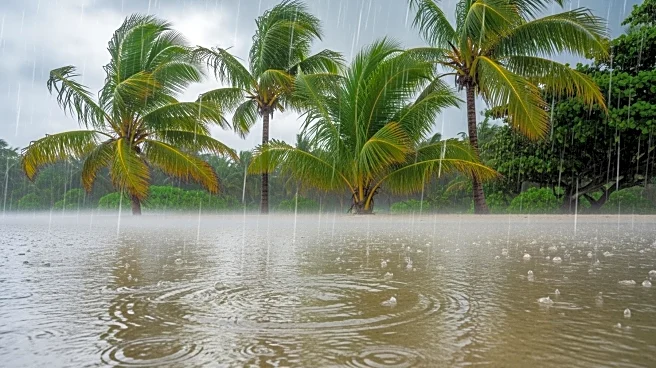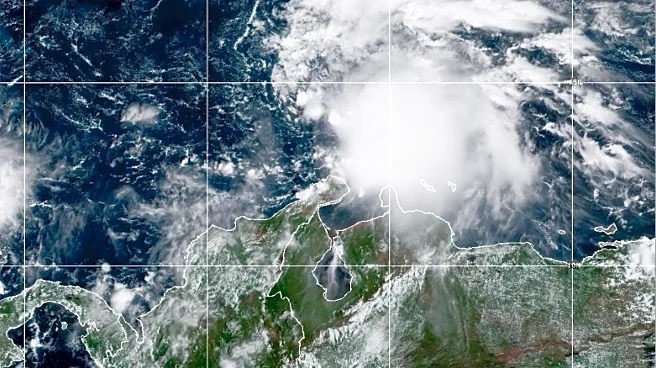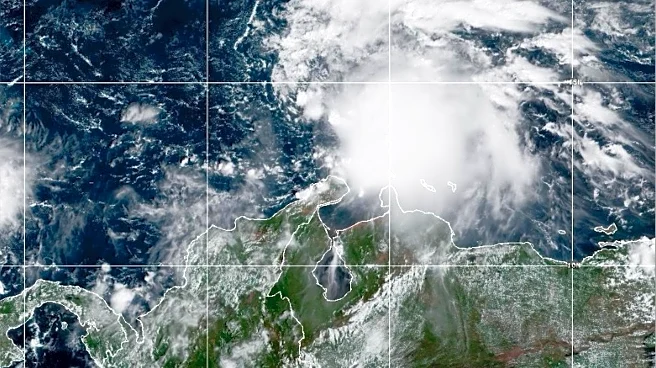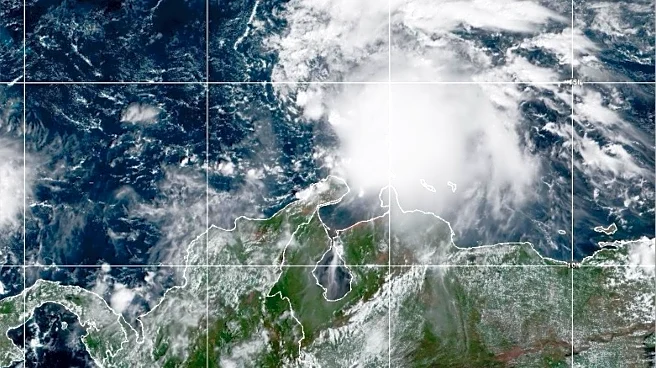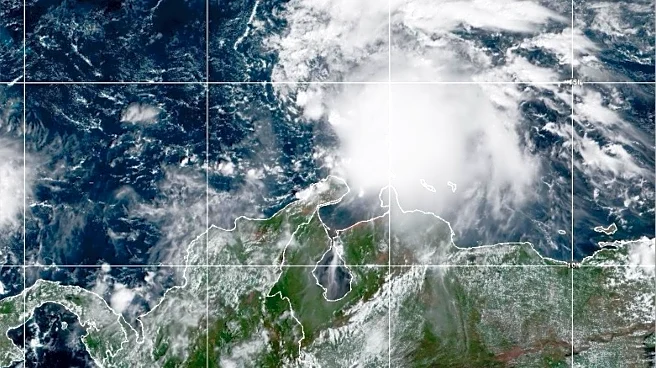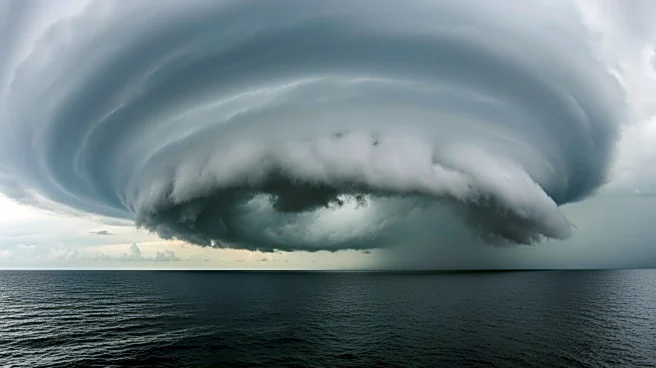What's Happening?
Tropical Storm Melissa has begun to impact the Caribbean, bringing heavy rain to Hispaniola, which includes Haiti and the Dominican Republic, as well as Jamaica. The U.S. National Hurricane Center has issued
warnings about significant flood risks in these areas. The storm, located approximately 325 miles south-southwest of Port-au-Prince, Haiti, is moving west at 13 mph with maximum sustained winds of 50 mph. The Dominican Republic's capital, Santo Domingo, has experienced traffic disruptions, and professional baseball games have been canceled due to the storm. Haiti is particularly vulnerable to flooding due to widespread erosion, and a hurricane watch has been issued for southern Haiti, while Jamaica is under a tropical storm watch.
Why It's Important?
The heavy rainfall associated with Tropical Storm Melissa poses a serious threat to the Caribbean region, particularly in areas prone to flooding and landslides. Haiti, which has historically suffered from devastating floods, faces significant risks that could lead to loss of life and property. The Dominican Republic and Jamaica are also at risk, with potential impacts on infrastructure and local economies. The storm's progression and potential strengthening could exacerbate these risks, making it crucial for residents and authorities to remain vigilant and prepared for emergency responses.
What's Next?
The U.S. National Hurricane Center forecasts that Tropical Storm Melissa may gain strength gradually, with the possibility of becoming a hurricane. Residents in affected areas are advised to stay alert and monitor updates on the storm's path and intensity. Emergency services and local governments are likely to prepare for potential evacuations and disaster response efforts. The storm's uncertain track and forward movement mean that continuous monitoring is essential to mitigate risks and ensure public safety.
